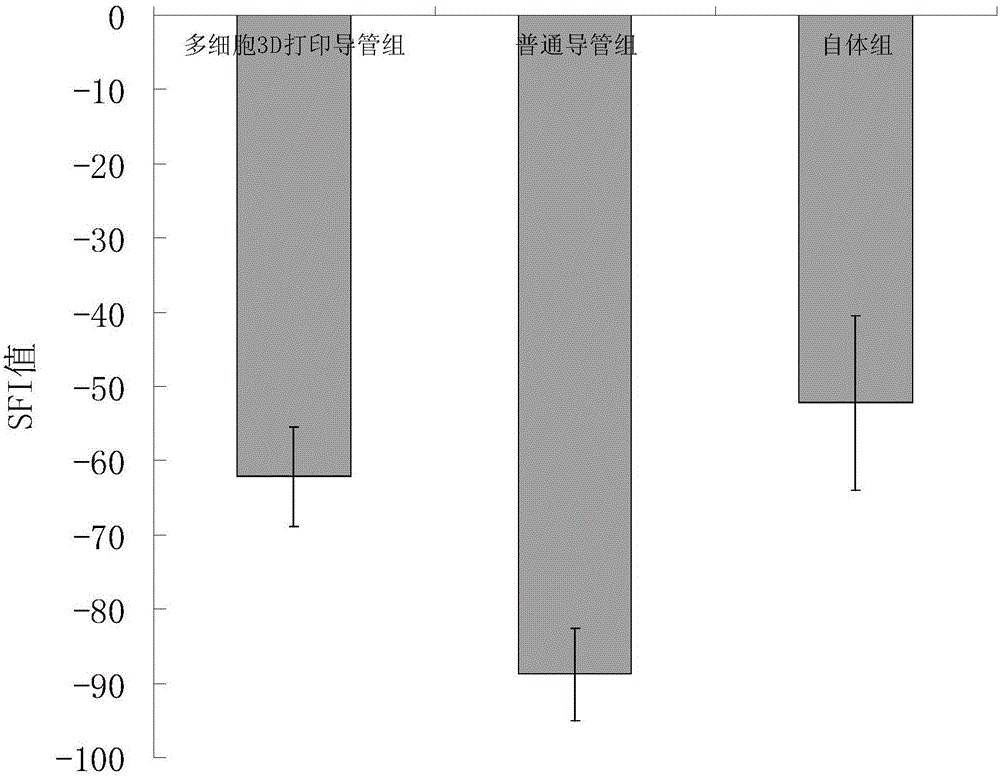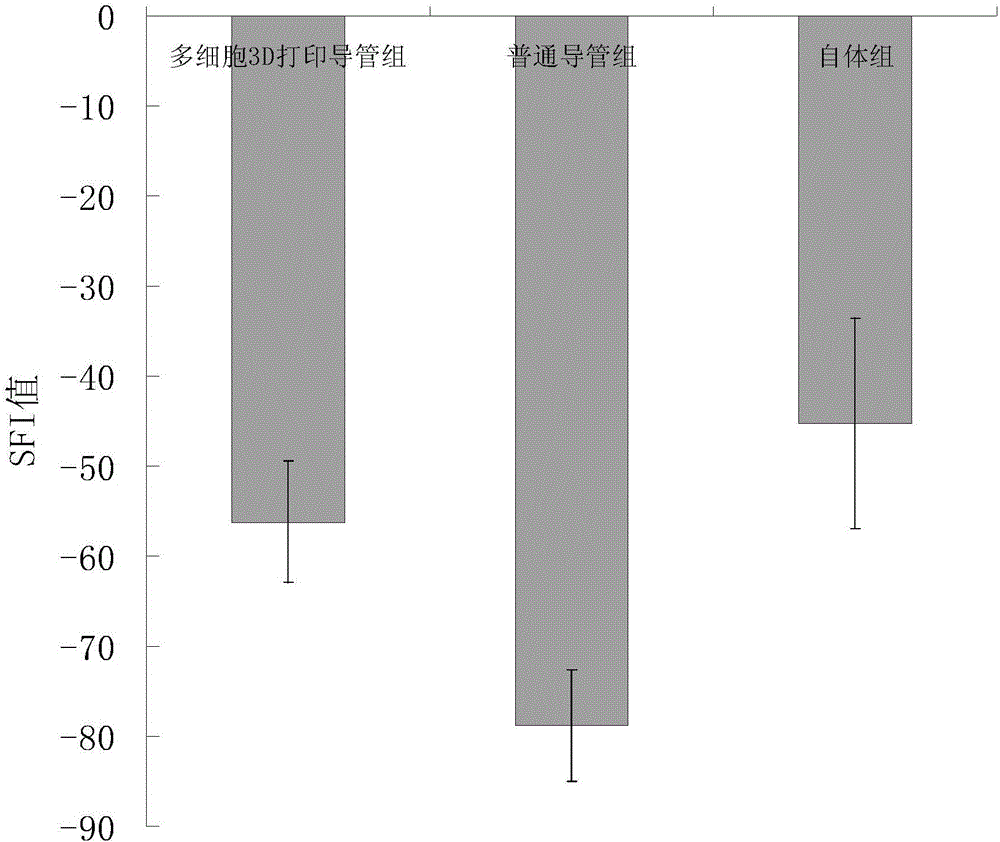Nerve conduits based on three-dimension printing of multiple types of cells and producing method thereof
A nerve conduit and 3D printing technology, which is applied in braided fabrics, medical science, textiles and papermaking, etc., can solve the problems of long-term loss of innervation and inability to restore function of distal effector organs, and facilitate transportation and exchange, bionic degree Good, high economical effect
- Summary
- Abstract
- Description
- Claims
- Application Information
AI Technical Summary
Problems solved by technology
Method used
Image
Examples
Embodiment 1
[0027] 1) Preparation of braided wire: make monofilaments with a diameter of 12 μm, 8 monofilaments are made into multifilaments, 2 strands of multifilaments are made into long filaments, and 2 strands of filaments with an average fineness of 6tex are heated at a temperature of 25°C and a relative humidity of 70°C. Under atmospheric conditions of %, 2 strands of filaments are twisted into a braided wire at 200 twists / m;
[0028] 2) Tubular outer layer braiding support: braid the braided wire on a 10-spindle vertical spindle braiding machine at a temperature of 20°C and a relative humidity of 65%, using the Hercules braiding process for braiding. The braiding angle is 45°, and the inner diameter of the casing is 3mm, wall thickness 0.5mm, length 20mm;
[0029] 3) Tubular inner braiding support: place the braiding wire on an 8-spindle vertical spindle braiding machine at a temperature of 20°C and a relative humidity of 65%, using a two-dimensional and three-axial braiding proces...
Embodiment 2
[0038] 1) Preparation of braided wire: make monofilaments with a diameter of 14 μm, 6 monofilaments are made into multifilaments, 2 strands of multifilaments are made into long filaments, and 3 strands of filaments with an average fineness of 8tex are heated at a temperature of 25°C and a relative humidity of 70°C. % under atmospheric conditions, twist 2 strands of filaments into a braided wire at 250 twists / m;
[0039] 2) Outer tubular braided sleeve: the braided wire is braided on a 12-spindle vertical spindle braiding machine at a temperature of 20°C and a relative humidity of 65%. The braiding angle is 45°, and the sleeve The inner diameter is 5mm, the wall thickness is 0.6mm, and the length is 80mm;
[0040] 3) Internal braided small tube: place the braided wire on a 12-spindle vertical spindle braiding machine at a temperature of 20°C and a relative humidity of 65%, using a two-dimensional and three-axial braiding process, with a braiding angle of 55° and an inner diamet...
PUM
| Property | Measurement | Unit |
|---|---|---|
| diameter | aaaaa | aaaaa |
| length | aaaaa | aaaaa |
| thickness | aaaaa | aaaaa |
Abstract
Description
Claims
Application Information
 Login to View More
Login to View More - R&D
- Intellectual Property
- Life Sciences
- Materials
- Tech Scout
- Unparalleled Data Quality
- Higher Quality Content
- 60% Fewer Hallucinations
Browse by: Latest US Patents, China's latest patents, Technical Efficacy Thesaurus, Application Domain, Technology Topic, Popular Technical Reports.
© 2025 PatSnap. All rights reserved.Legal|Privacy policy|Modern Slavery Act Transparency Statement|Sitemap|About US| Contact US: help@patsnap.com


